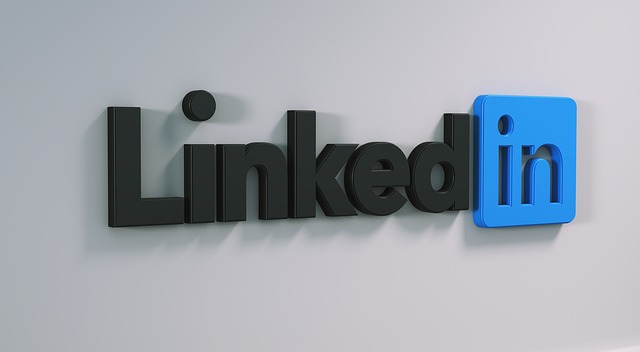
LinkedIn has evolved from being solely an online professional networking platform to now providing small business owners with a valuable chance to expand and enhance their business. Similar to other social media platforms, a significant portion of these advantageous features can be accessed without any cost.
Are you curious? Here are some suggestions to begin utilizing LinkedIn for your small business.
1. Create your personal LinkedIn profile
Starting your LinkedIn journey with a personal profile might appear unconventional if you intend to utilize the platform to promote your small business. However, the majority of your LinkedIn activity takes place on your personal profile.
If you do not already have a personal profile, you can create one now. Although it may seem similar to creating a resume, it is important to approach building your profile strategically. Instead of thinking of it as something for job seekers, envision it as if you are a business owner.
When including your role as the owner of your company in the Work Experience section, it is also important to emphasize your responsibilities in the headline of your profile. Furthermore, in your About or summary section, it is crucial to showcase your identity and the narrative behind your business.
2. Complete your LinkedIn company page
After completing your profile, the next step is to establish a company page. Consider your company page as the main page for your business on LinkedIn. It is a platform where you can establish trust and credibility by sharing your business’s story, and it also enhances the likelihood of your page appearing in search results on LinkedIn and Google.
Make sure to incorporate your logo and a cover image on your page, ensuring that they align with your brand’s colors and images. Additionally, remember to prioritize search engine optimization. For instance, when describing your business in the About Us section, include relevant SEO keywords.
After setting up your company page, remember to return to your personal profile and include a link to your new page in the Work Experience section. Additionally, it is important to regularly post company updates on your page. However, it is worth noting that most of the reach on LinkedIn occurs through your personal profile.
3. Grow your connections
Linkedin’s “Connections” can be seen as the equivalent of Facebook’s “friends” or Instagram’s “followers.”
LinkedIn offers a simple way to start making connections: Just synchronize your email contacts to locate familiar individuals on LinkedIn. Sending a connection request can be a matter of a few clicks on their profile. Enhance the possibility of people joining your network by including a concise personalized message along with your request.
Your network plays a crucial role in broadening your business’s reach on LinkedIn. Each person you connect with is considered a first-degree connection, however, it is your second-degree connections where the real potential lies.
Second-degree connections refer to individuals with whom you have a mutual connection. To illustrate, suppose you are connected with John, your accountant, on LinkedIn. Sunita is also connected with John, which makes her a second-degree connection for you.
When John interacts with your profile publicly, such as by liking or commenting on one of your posts, LinkedIn will display John’s reaction or comment (along with your post) to some of John’s connections like Sunita, even if you are not connected to Sunita at the moment. This is how second-degree connections aid in expanding your reach on LinkedIn.
4. Post regularly on your personal profile
If you post more frequently, your chances of your posts being seen by your second-degree connections in their feeds will increase.
In addition to consistent posting, the quality of your posts is equally important. To increase your reach, your connections need to like or comment on your posts. A higher chance of interaction with your content arises from having engaging, informative, or helpful posts.
When generating ideas for content, consider the pain points of potential customers and how your business can assist in resolving these issues. As you write your posts, keep this in mind and avoid sounding too focused on sales or promotions. For instance, you could share brief case studies that showcase how a product benefited a customer, or provide a list of useful tips for addressing a particular problem.
5. Carry out promotional activities for your company page.
After creating a Company Page, make sure to inform your clients, employees, and personal network about it. This will enable you to attract initial followers, who will then assist in promoting your Company Page through the content you share on it.
If you want to expand your audience, consider promoting your page on different platforms or through email. Here are a few straightforward methods to spread the word:
Inform your personal LinkedIn network about the initiation of the Company Page.
According to Social Media Today, including the Company Page as part of your onboarding process will motivate employees to follow it, as content shared by employees generates eight times more engagement compared to content shared by the brand.
Include the URL to your Company Page in the footer section of your marketing emails or newsletters.
To enable visitors on your website to easily follow your LinkedIn Company Page, you should embed a Company Follow button.
Ensure that you distribute content consistently.
By posting more frequently, you can increase your potential reach and the number of people who may become customers. LinkedIn Company Pages that are regularly updated with new content provide visitors with ample material to engage with and share.
To begin, aim to make at least one post per week. It is not unusual for companies to make three or more posts daily. Share your thoughts only when you have valuable content to deliver. By consistently posting, visitors to your Company Page will perceive that your company actively engages on LinkedIn.
By utilizing LinkedIn’s Company Page analytics, you can observe your most successful updates, ideal posting times, and the most engaged members of your audience. This valuable knowledge enables you to make informed choices in order to enhance the content on your Company Page.
Here’s a further set of statistics to assist you in enhancing engagement, alongside frequent posting.
There is an increase in engagement of up to 45% for posts that include links.
Engagement in images witnesses a staggering 98% boost.
Posts that contain relevant “best-of” lists experience an increase in amplification by nearly 40%.
If a post receives good engagement, you should think about using LinkedIn Sponsored Content to promote it to a larger audience. Participate in the Sponsored Content Tour to learn about the ways in which Sponsored Content enhances the reach of your top-quality content.
7. Demonstrate expertise and authority in a particular subject or field of knowledge.
When it comes to deciding which companies they want to know more about, seventy nine percent of buyers consider thought leadership to be essential.
To commence creating thought leadership content, consider offering a distinct viewpoint concerning your industry, product, or organization. Two examples of showcasing your knowledge and establishing your company as a reliable partner are expressing your standpoint on the future of your industry or producing an authoritative manual on your product.
8. Identify potential customers for sales.
LinkedIn currently has more than 500 million users. Although this may appear to be a large number to navigate, LinkedIn offers tools that allow you to identify and focus on your preferred audience.
LinkedIn members are more inclined to regularly update their profiles compared to other social media users, which facilitates finding the appropriate individuals.
By utilizing LinkedIn profile data, it is possible to search for LinkedIn members by considering factors such as their geographical location, educational background, previous work experience, and even their connections. After identifying potential prospects through the search feature, it is recommended to visit their profiles. This can help identify additional qualified prospects based on their endorsements or recent profile views.
9. Assemble a high-performing team of exceptional individuals.
LinkedIn Career Page can enhance your Company Page to take advantage of the preference of candidates who want to see company culture over everything else. Our research shows that 66% of candidates are looking for company culture when making informed career decisions, making LinkedIn a top recruiting network that has helped 75% of job switchers.
By utilizing Career Pages, you have the ability to specifically reach out to audiences by providing them with a customized glimpse into your company, culture, and available positions. These pages incorporate distinct Life and Jobs Tabs on your Company Page that are designed to captivate and involve relevant professionals.
Aside from creating Career Pages, it is advisable to also motivate employees to share job postings and content that showcases a typical workday. This will provide visitors with an authentic understanding of the work environment in your organization and enhance your credibility.
If you have some employees who are particularly good at sharing content, you can connect them to your Company Page’s Life Tab. This will allow their shared articles and recent updates to appear automatically, keeping visitors informed with the latest information. Watch our video below for guidance on using the Life Tab to attract suitable talent for your company.




